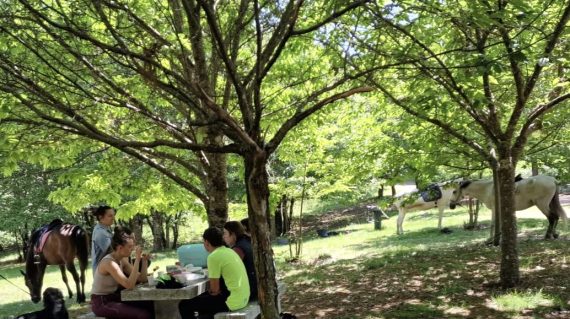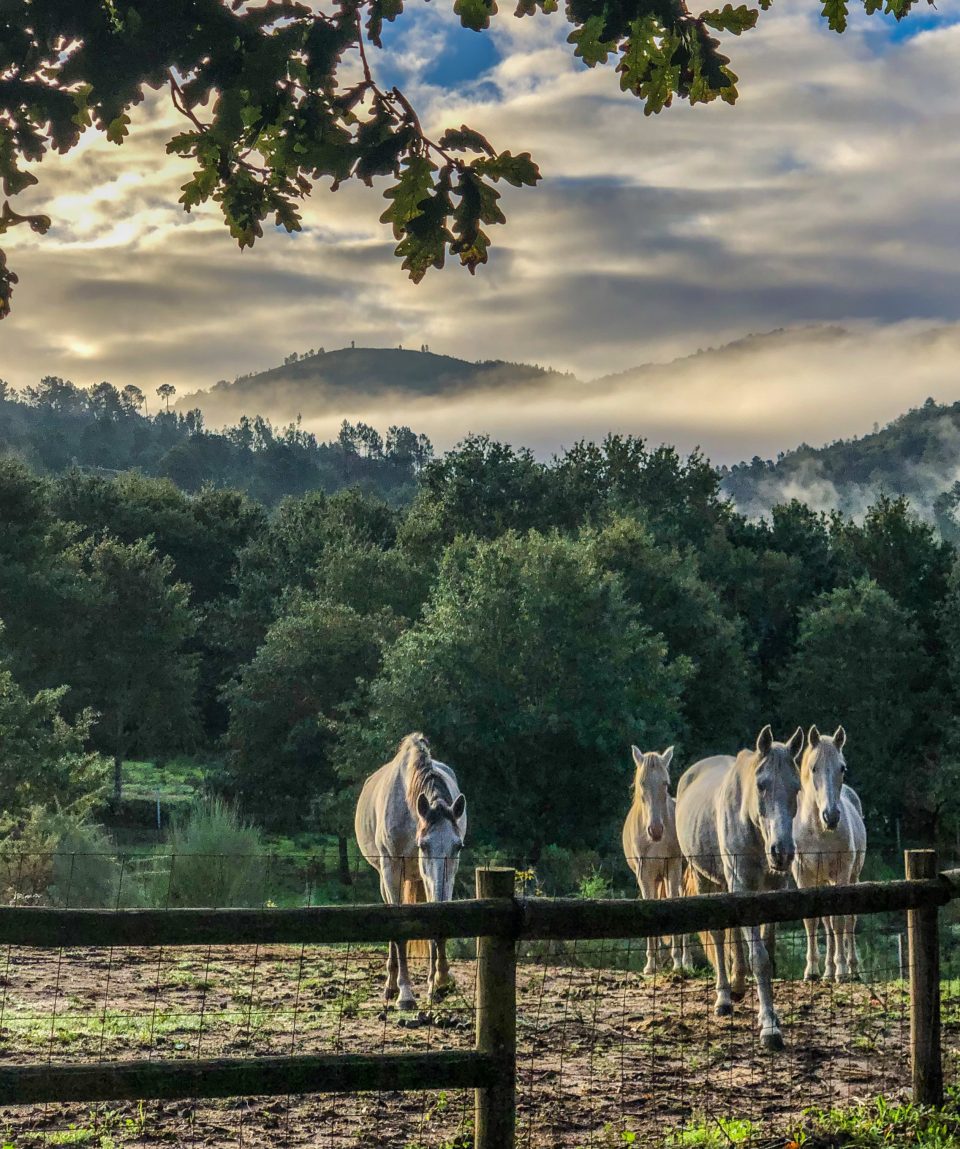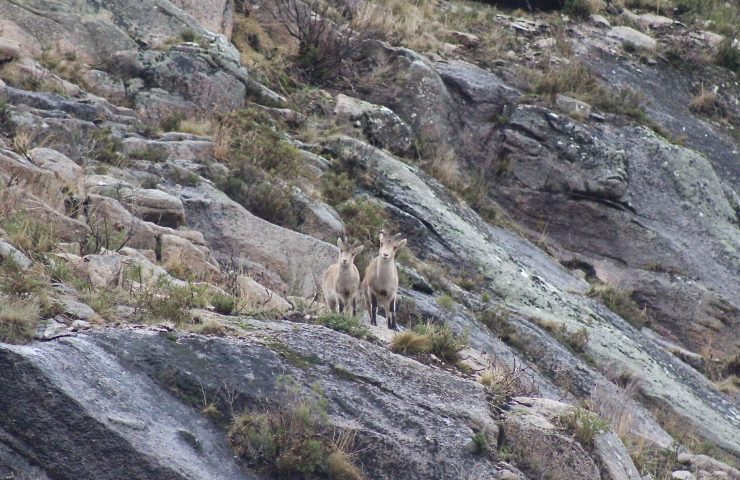
Gerês-Xurés Nature Reserve
Spain/Portugal
We set out on a horse riding trail from Spain to Portugal! We start in the southern part of Spanish Galicia to finish the tour near Ponte de Barca, in Portugal. The route of this tour leads through national parks and a cross-border biosphere reserve stretching on both sides of the border. It’s a moderately-paced ride in the midst of extraordinary nature and beautiful sights, garnished with local cuisine and excellent wines of Spain and Portugal.
-
Days overall7 daysDays in saddle5
-
Group size10Available
-
StandardIberian hospitality: mostly under roofs and deliciousLuggageno limit kgFoodlocal cuisine, vegetarian available
-
Skillswalk, trot, canter
We are setting off on a tour to cross the border between Spain and Portugal! We start our adventure in the province of Ourense, in the southern part of Galicia. Our trail takes us through the Gerês-Xurés Biosphere Reserve, one of the largest cross-border reserves of the European Union. The reserve area encompasses a mosaic of diverse ecosystems and protects many endemic species. Since 2009, it has been included in the list of UNESCO biosphere reserves created to showcase, promote and protect the sustainable relationship between humans and the biosphere.
The area is dominated by mountainous terrain, although the highest peaks in the region reach just over 1,500 metres, while also representing one of the largest forested areas on the Iberian Peninsula. The reserve abounds with picturesque sites, a mosaic of ecosystems shaped by Mediterranean and oceanic climates, often noticeably different from each other.
Evidence of human activity from different periods can be found throughout the region. Within the reserve we will encounter traces and remains from different eras: prehistoric dolmens, remains of Roman forts and buildings, ruins of Visigothic and Latin buildings and Baroque architecture.
We spend three days on horseback in Spain and another two in Portugal. We will reach the Spanish-Portuguese border on the third day of horseback riding, and on the fourth we will cross it in the Peneda-Gerês National Park. Interestingly, it is Portugal’s… only national park. To top it off, if we’re lucky, we may come across the wild local Garrano ponies.
We have a week ahead of us in a very interesting Spanish-Portuguese border region. A place where nature, people and their heritage are intertwined.
In terms of riding this tour is quite relaxed and recreational, with no rush, allowing for savouring the beauty of the surrounding nature and heritage.
For horse welfare reasons, the weight of the riders is limited to 90 kg.
- 4 overnight stays in chalets, farmhouses and a lakeside cottage
- 1 night tenting
- 1 nocleg at a hotel in Ponte de Barca
- All meales (breakfasts, lunches “to go”, dinners)
- Transfers to and from Porto or Santiago de Compostella airports (depending on your travel plan)
- English-speaking pilot/guide during the entire tour
- Horse with full tack and equipment
- Tourist insurance covering high-risk sports
- Flight tickets to and from Spain or Portugal (depending on your travel plan)
- Additional, minor personal expenses (souvenirs, additional snacks, etc.)
- Day 1 Arrival to Galicia
- Day 2 Off we go!
- Day 3 Rio Lima and a lakeside cottage
- Day 4 Mines and camp at the peak
- Day 5 Peneda-Gerês
- Day 6 Wild horses
- Day 7 Adiós! Adeus! Farewell to Spain and Portugal!



In terms of accommodation, this tour is quite comfortable. We spend five nights under roofs, in comfortable and charming places, and one night camping/tenting. We spend the last night in a hotel on the Portuguese side and the rest of the nights are spent in chalets, farmhouses and in a lakeside cottage. With the exception of one night in tents, we have access to sanitary facilities (rooms with bathrooms or shared bathrooms for the whole group) and additional amenities, in pleasant and atmospheric locations in the Spanish-Portuguese border area.
Tents and sleeping mats/mattresses are provided during the overnight camp, you will need your own sleeping bag.
All meals during the tour are provided, starting with dinner on the first day and finishing with breakfast on the last day. The cuisine and wine cellars of the Spanish-Portuguese border region have a lot to offer. We will taste the dishes of Spanish Galicia and the north of Portugal, which combine and intertwine in this region. Both gourmets and wine lovers will be well satisfied, the local cuisine and the contents of the cellars delight with tastes and flavours.
Equipment
We use typical English saddles. Saddles are constructed traditionally, we use bits. The equipment during this tour does not really differ from what what the majority of European stables use.
Each rider is provided with small saddlebags for a bottle of water and other handy items. Valuables (documents, phone, cash) should be carried in a tightly closed pouch, e.g. a waist one.
You main luggage will be transported by an assisting vehicle, so there isn’t anything else – apart from your personal riding gear – you’d need for riding.
Although it’s not required we recommend using a riding helmet.
What shoud you take with you?
The group is assisted by a luggage car that will carry all belongings. For the daily parts of the ride we take only what we might need for the day.
Tensts and sleeping mats for the tenting night are provided, riders should take their own sleeping bags.
- passport or personal ID
- cash – in Euro
- riding boots (we recommend trekking boots)
- sunglasses
- raincoat
- flip flops for showering
- swimsuit
- towel
- sleeping bags
- sunscreen
- insect repellent
- electronic devices, e.g. camera, powerbank
- flashlight, headlamps are handy
- a canteen or other water containers (it might be an empty plastic bottle)










